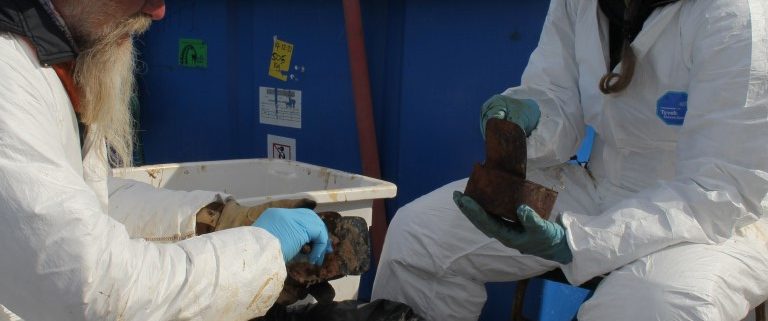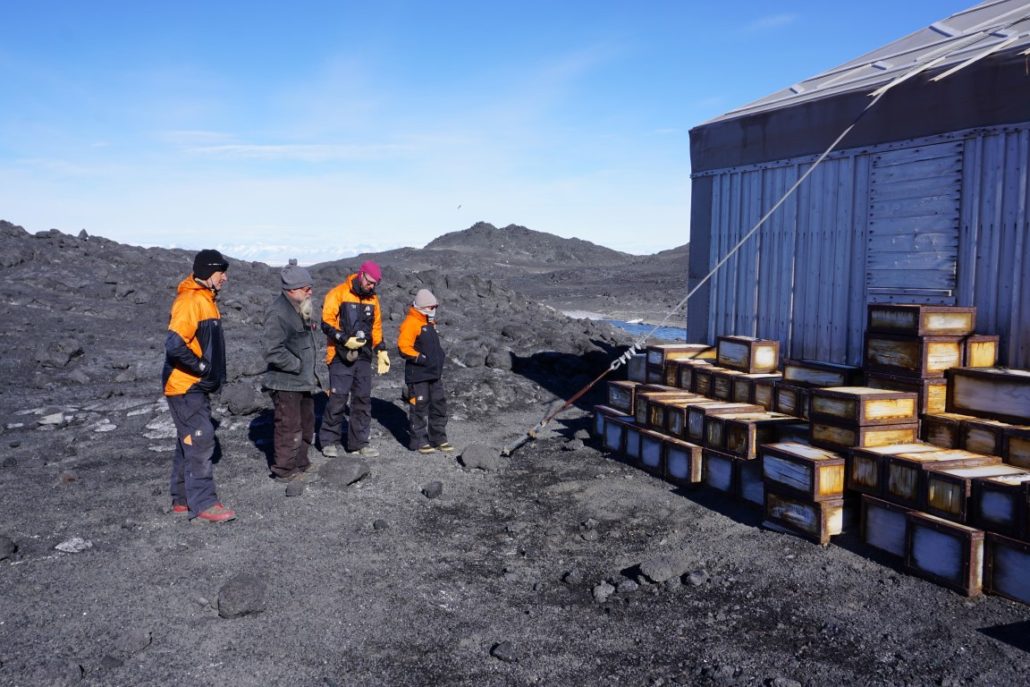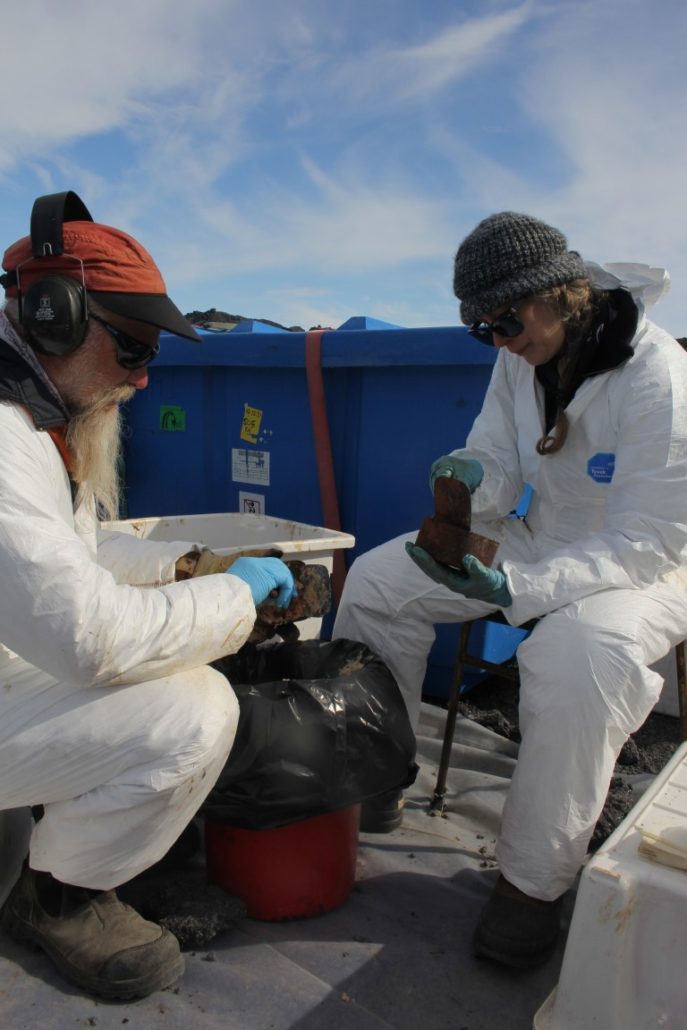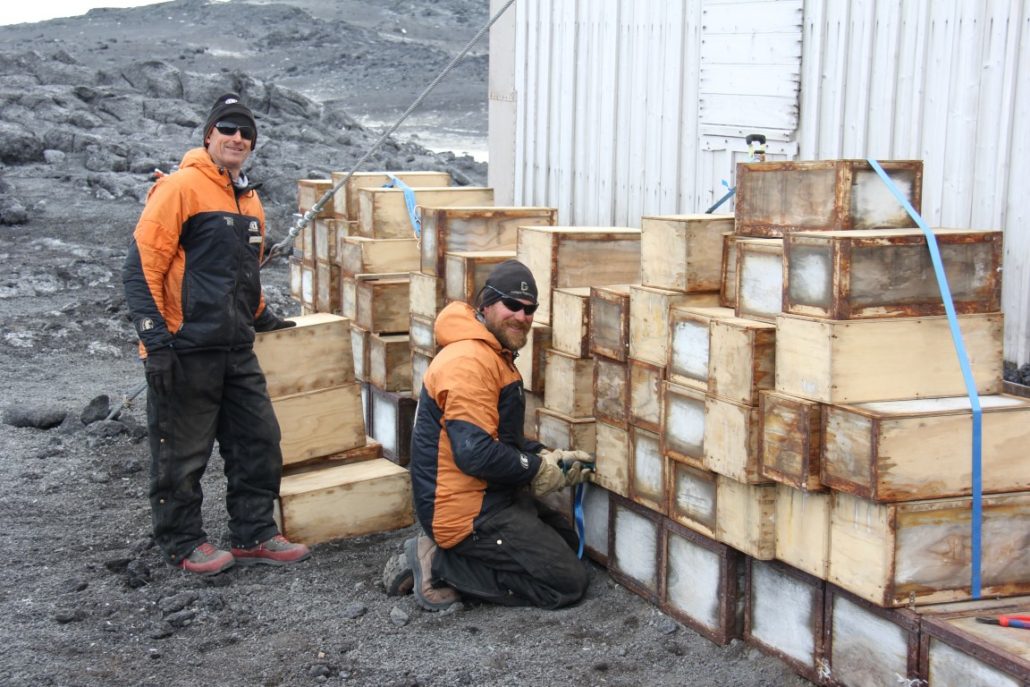Conserving Venesta cases and their contents at Cape Royds
Antarctic Heritage Trust Conservator Jane Hamill explains how the On Ice team preserves original material and reduces environmental contamination at Shackleton’s Nimrod hut, Cape Royds
2,500 Venesta cases filled with tins of food were taken by Sir Ernest Shackleton for the British Antarctic Expedition of 1907-1909. The cases were stacked around Nimrod hut at Cape Royds and used as walls for stores, a garage and stables. Such an expedition required great planning and significant supplies of equipment and food.
Venesta cases were a new innovation that enabled the early Antarctic explorers to transport greater quantities of food than they could in heavy wooden boxes.
The team assessing the Venesta cases against the south wall of Shackleton’s Nimrod hut and considering the work ahead. Credit: AHT/Jane Hamill.
Dismantling the stack for conservation. Credit: AHT/Al Fastier.
Harsh winds, blowing scoria and sea spray over the past century has led to the cases and their contents disintegrating.
In 2007 conservation was undertaken to prevent environmental contamination and to preserve as much original material as possible. Modern boxes faced with the original Venesta sides were constructed. The food tins were sealed in bags and replaced. The conserved cases were positioned against the hut, replicating how they would have appeared during the expedition.
However, the harsh environment continues to take its toll and the cases were beginning to show deterioration. During this year’s field season, the team dismantled the cases, removing the original sides for future conservation. Tins were removed from their plastic packaging and emptied of their food contents. This is to ensure the historic food and plastic packaging does not contaminate the local environment or its residents.
Emptied tins were replaced in the modern boxes and replaced around the hut. The task of conserving the Venesta cases is not over, but the original material has been saved so that it can be conserved in the future.
Emptying the historic food tins before they are replaced in the modern boxes. Credit: AHT/Jane Hamill.
Replacing and securing the modern boxes against the south wall. Credit: AHT/Al Fastier.







 Antarctic Heritage Trust/Al Fastier
Antarctic Heritage Trust/Al Fastier